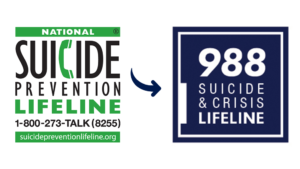 “Suicide is a serious public health problem that can have lasting harmful effects on individuals, families, and communities. While its causes are complex and determined by multiple factors, the goal of suicide prevention is simple: Reduce factors that increase risk (i.e. risk factors) and increase factors that promote resilience (i.e. protective factors). Ideally, prevention addresses all levels of influence: individual, relationship, community, and societal. Effective prevention strategies are needed to promote awareness of suicide and encourage a commitment to social change.” Center for Disease Control and Prevention
“Suicide is a serious public health problem that can have lasting harmful effects on individuals, families, and communities. While its causes are complex and determined by multiple factors, the goal of suicide prevention is simple: Reduce factors that increase risk (i.e. risk factors) and increase factors that promote resilience (i.e. protective factors). Ideally, prevention addresses all levels of influence: individual, relationship, community, and societal. Effective prevention strategies are needed to promote awareness of suicide and encourage a commitment to social change.” Center for Disease Control and Prevention

RESOURCES:
Do You Need Help? Call a Suicide Lifeline:
National Suicide Prevention Lifeline: Call 988
Suicide Prevention Center Hotline: Call 988
Crisis Text Line: Text HOME to 741741
Trevor Lifeline – LGBTQ 1-866-488-7386
Teen Line 1-800-TLC-TEEN or 1-800-852-8336
Veterans & Military Families 1-800-273-8255 Press 1
Suicide Prevention Information, Resources and Interventions
School Social Workers are on the front line in identifying, assessing and providing interventions for students at risk for suicide. We hope these resources provide you with some assistance. Listed below are just a few of the resources available to the public.
NYSSSWA Members: NYSSSWA members have FULL ACCESS to many more resources including: Assessments, Facts, High School Tool kits, Safety Plans, Peer Response Tips, Intervention Strategies, Articles, School Personnel Guidelines, Suicide Prevention Organizations, “After an Event” guides/post-vention, “13 Reasons Why” resources, and more.
Click Here for Members Only Resources
Assessment Tools:
SAFE-T Suicide Assessment 5 Step Evaluation & Triage. Source: SAMHSA
SAFE-T Protocol with CSSR-S. Source: SAMHSA
Suicide Assessment Five-Step Evaluation and Triage (SAFE-T) card. This resource gives a brief overview on conducting a suicide assessment using a five-step evaluation and triage plan. Source: SAMHSA
Suicide Prevention Information, Resources and Interventions
“Be That One” How peers and others can respond when someone may be suicidal. Although this resource is directed towards students at the University of Texas at Ausin, the guidelines could be applied to other school settings. Source: University of Texas at Austin
Safety Plans to Prevent Suicide. Article and reference links. Source: Centre for Suicide Prevention
Suicide Prevention Facts & Resources: Source SAMHSA
Suicide Safe: Mobile App For individuals at risk of suicide, primary and behavioral health care settings provide unique opportunities to connect with the health care system and access effective treatment. Suicide Safe is a free mobile app that helps providers integrate suicide prevention strategies into their practice and address suicide risk among their patients. Source: SAMHSA
What You Need to Know About Youth Suicide Includes information on “What to Do If You Are Worried About Yourself or Someone You Love”, “Helpful Responses For When a Friend Is In Distress”, Common Risk and Protective Factors, etc. Source: NAMI
Suicide Prevention Organizations
Centers for Disease Control and Prevention. Information regarding Suicide statistics, Understanding Suicide Fact Sheet, Suicide Prevention Strategies as well as “Effective and Promising Programs” and much more.
SOS, Signs of Suicide. Providing tools to help youth identify the signs and symptoms of depression, suicide, and self-injury in themselves and their peers.
Suicide Prevention Resource Center. SPRC serves individuals, groups, and organizations that play important roles in suicide prevention: SPRC creates resources on a variety of topics of interest including publications, online and printed toolkits, fact sheets, guides, and many types of training.
13 Reasons Why Resources
13 Reasons Why Resources: Suicide Prevention Resource Center has compiled numerous resources to help address the most common questions from parents, schools, media, and community leaders to help you talk about the series and suicide risk and prevention. Source: Suicide Prevention Resource Center
Crisis Response Resources: NYSSSWA Membership Dollars At Work
The New York State School Social Workers’ Association (NYSSSWA) is the only professional association dedicated solely to the visibility and viability of School Social Workers in New York State. Members are essential to our ability to support you and our profession. If you are not a member, join us today so we can continue to provide advocacy and services on your behalf.
Learn More About The Benefits Included in a Membership!

